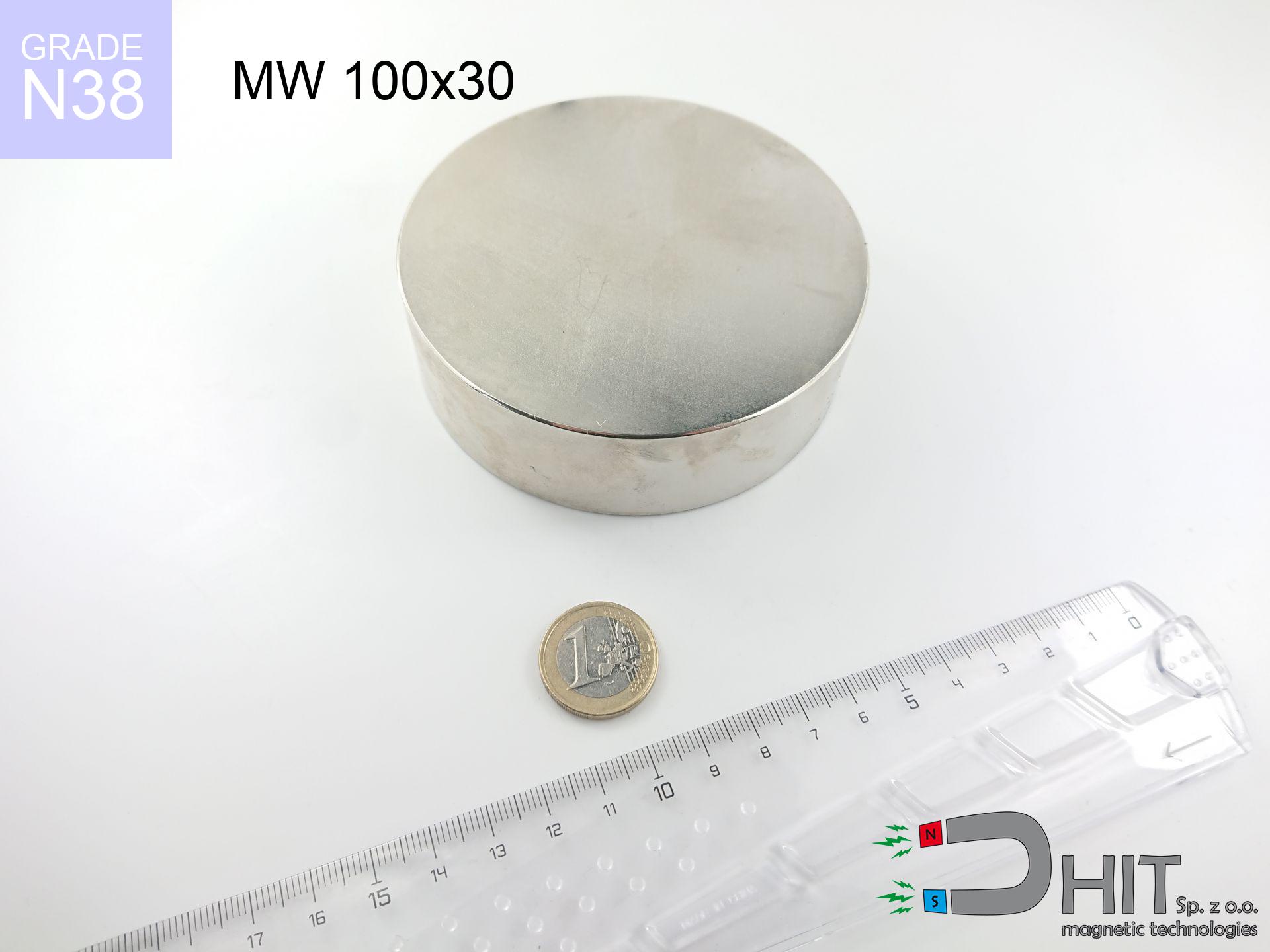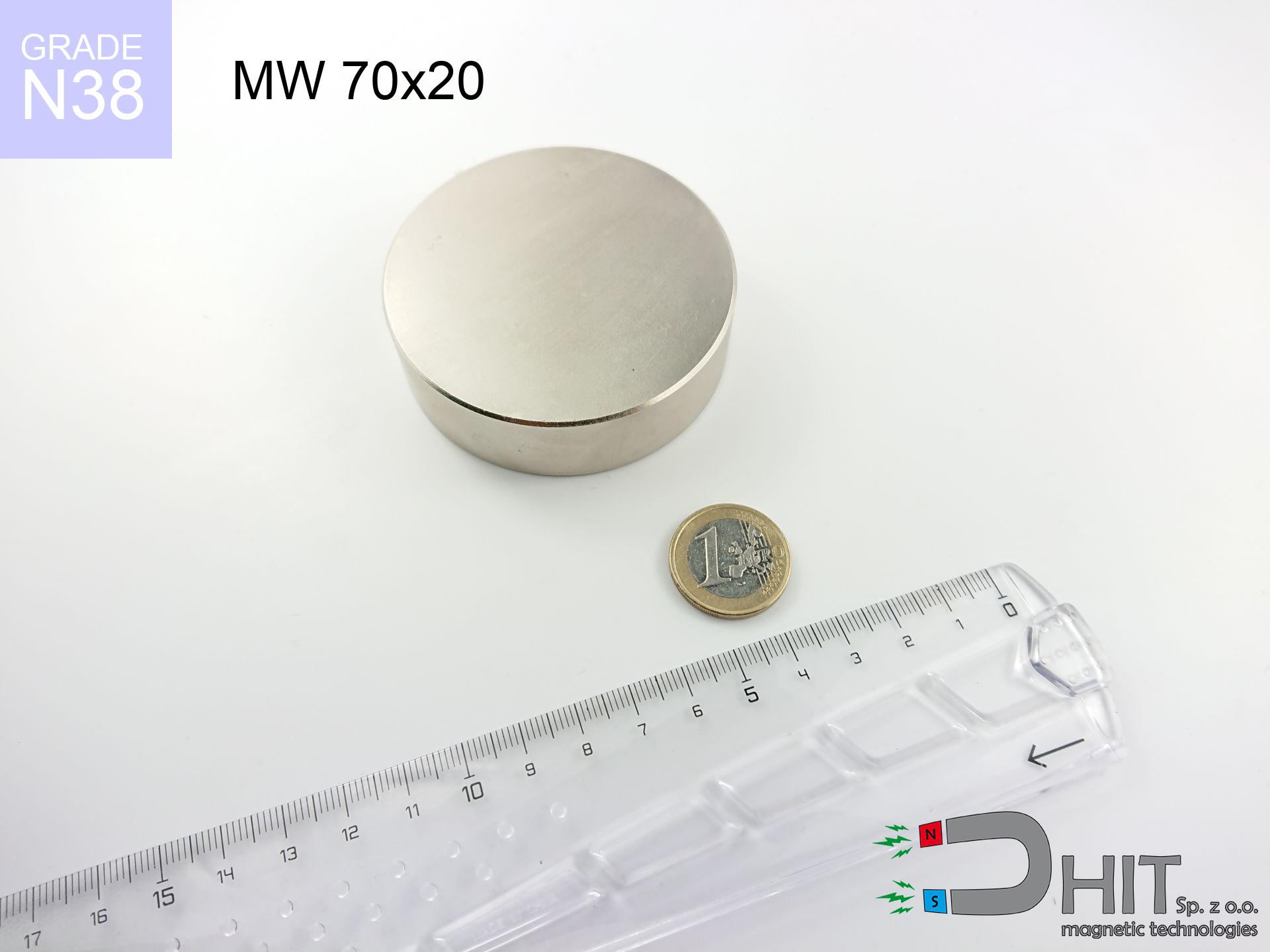UMGB 75x28 [M10x3] GW F200 PLATINIUM + Lina GOBLIN / N52 - goblin magnetic holder
goblin magnetic holder
Catalog no 350441
GTIN/EAN: 5906301814832
Diameter Ø
75 mm [±1 mm]
Height
28 mm [±1 mm]
Weight
900 g
Magnetization Direction
↑ axial
Load capacity
365.00 kg / 3579.43 N
Coating
[NiCuNi] Nickel
280.00 ZŁ with VAT / pcs + price for transport
227.64 ZŁ net + 23% VAT / pcs
bulk discounts:
Need more?
Call us
+48 22 499 98 98
alternatively get in touch through
inquiry form
our website.
Parameters along with shape of magnetic components can be verified using our
magnetic mass calculator.
Orders placed before 14:00 will be shipped the same business day.
Technical - UMGB 75x28 [M10x3] GW F200 PLATINIUM + Lina GOBLIN / N52 - goblin magnetic holder
Specification / characteristics - UMGB 75x28 [M10x3] GW F200 PLATINIUM + Lina GOBLIN / N52 - goblin magnetic holder
| properties | values |
|---|---|
| Cat. no. | 350441 |
| GTIN/EAN | 5906301814832 |
| Production/Distribution | Dhit sp. z o.o. |
| Country of origin | Poland / China / Germany |
| Customs code | 85059029 |
| Diameter Ø | 75 mm [±1 mm] |
| Height | 28 mm [±1 mm] |
| Weight | 900 g |
| Magnetization Direction | ↑ axial |
| Load capacity ~ ? | 365.00 kg / 3579.43 N |
| Coating | [NiCuNi] Nickel |
| Manufacturing Tolerance | ±1 mm |
Magnetic properties of material N52
| properties | values | units |
|---|---|---|
| remenance Br [min. - max.] ? | 14.2-14.7 | kGs |
| remenance Br [min. - max.] ? | 1420-1470 | mT |
| coercivity bHc ? | 10.8-12.5 | kOe |
| coercivity bHc ? | 860-995 | kA/m |
| actual internal force iHc | ≥ 12 | kOe |
| actual internal force iHc | ≥ 955 | kA/m |
| energy density [min. - max.] ? | 48-53 | BH max MGOe |
| energy density [min. - max.] ? | 380-422 | BH max KJ/m |
| max. temperature ? | ≤ 80 | °C |
Physical properties of sintered neodymium magnets Nd2Fe14B at 20°C
| properties | values | units |
|---|---|---|
| Vickers hardness | ≥550 | Hv |
| Density | ≥7.4 | g/cm3 |
| Curie Temperature TC | 312 - 380 | °C |
| Curie Temperature TF | 593 - 716 | °F |
| Specific resistance | 150 | μΩ⋅cm |
| Bending strength | 250 | MPa |
| Compressive strength | 1000~1100 | MPa |
| Thermal expansion parallel (∥) to orientation (M) | (3-4) x 10-6 | °C-1 |
| Thermal expansion perpendicular (⊥) to orientation (M) | -(1-3) x 10-6 | °C-1 |
| Young's modulus | 1.7 x 104 | kg/mm² |
Chemical composition
| iron (Fe) | 64% – 68% |
| neodymium (Nd) | 29% – 32% |
| boron (B) | 1.1% – 1.2% |
| dysprosium (Dy) | 0.5% – 2.0% |
| coating (Ni-Cu-Ni) | < 0.05% |
Ecology and recycling (GPSR)
| recyclability (EoL) | 100% |
| recycled raw materials | ~10% (pre-cons) |
| carbon footprint | low / zredukowany |
| waste code (EWC) | 16 02 16 |
See also products
Strengths as well as weaknesses of Nd2Fe14B magnets.
Benefits
- They have unchanged lifting capacity, and over more than ten years their attraction force decreases symbolically – ~1% (according to theory),
- They feature excellent resistance to weakening of magnetic properties when exposed to external magnetic sources,
- A magnet with a metallic nickel surface has better aesthetics,
- Magnets have exceptionally strong magnetic induction on the active area,
- Due to their durability and thermal resistance, neodymium magnets are capable of operate (depending on the shape) even at high temperatures reaching 230°C or more...
- Possibility of custom machining as well as adapting to individual conditions,
- Huge importance in modern technologies – they serve a role in HDD drives, drive modules, advanced medical instruments, and modern systems.
- Compactness – despite small sizes they provide effective action, making them ideal for precision applications
Limitations
- At very strong impacts they can crack, therefore we advise placing them in strong housings. A metal housing provides additional protection against damage and increases the magnet's durability.
- When exposed to high temperature, neodymium magnets experience a drop in power. Often, when the temperature exceeds 80°C, their strength decreases (depending on the size, as well as shape of the magnet). For those who need magnets for extreme conditions, we offer [AH] versions withstanding up to 230°C
- Due to the susceptibility of magnets to corrosion in a humid environment, we suggest using waterproof magnets made of rubber, plastic or other material resistant to moisture, in case of application outdoors
- Due to limitations in producing nuts and complex forms in magnets, we propose using casing - magnetic mount.
- Possible danger resulting from small fragments of magnets pose a threat, if swallowed, which becomes key in the context of child safety. Furthermore, small components of these devices can complicate diagnosis medical in case of swallowing.
- High unit price – neodymium magnets have a higher price than other types of magnets (e.g. ferrite), which hinders application in large quantities
Holding force characteristics
Maximum lifting force for a neodymium magnet – what affects it?
- on a plate made of structural steel, perfectly concentrating the magnetic field
- with a cross-section minimum 10 mm
- characterized by even structure
- under conditions of gap-free contact (surface-to-surface)
- during pulling in a direction vertical to the mounting surface
- at room temperature
Determinants of practical lifting force of a magnet
- Air gap (betwixt the magnet and the metal), because even a very small clearance (e.g. 0.5 mm) can cause a drastic drop in force by up to 50% (this also applies to paint, rust or dirt).
- Force direction – catalog parameter refers to pulling vertically. When applying parallel force, the magnet holds much less (often approx. 20-30% of maximum force).
- Metal thickness – thin material does not allow full use of the magnet. Magnetic flux penetrates through instead of generating force.
- Plate material – mild steel attracts best. Alloy steels decrease magnetic properties and holding force.
- Surface finish – ideal contact is possible only on polished steel. Any scratches and bumps reduce the real contact area, weakening the magnet.
- Thermal factor – hot environment weakens magnetic field. Exceeding the limit temperature can permanently demagnetize the magnet.
Lifting capacity was assessed using a smooth steel plate of optimal thickness (min. 20 mm), under perpendicular pulling force, however under attempts to slide the magnet the holding force is lower. In addition, even a small distance between the magnet’s surface and the plate reduces the lifting capacity.
Warnings
Keep away from children
These products are not intended for children. Accidental ingestion of a few magnets can lead to them connecting inside the digestive tract, which constitutes a direct threat to life and requires urgent medical intervention.
Keep away from electronics
Remember: rare earth magnets produce a field that confuses sensitive sensors. Maintain a safe distance from your mobile, tablet, and GPS.
Warning for heart patients
Individuals with a ICD should keep an safe separation from magnets. The magnetic field can disrupt the operation of the implant.
Thermal limits
Control the heat. Heating the magnet to high heat will destroy its magnetic structure and pulling force.
Magnetic media
Device Safety: Neodymium magnets can damage data carriers and delicate electronics (pacemakers, hearing aids, timepieces).
Shattering risk
Neodymium magnets are ceramic materials, meaning they are fragile like glass. Impact of two magnets will cause them cracking into small pieces.
Nickel coating and allergies
It is widely known that the nickel plating (the usual finish) is a strong allergen. If your skin reacts to metals, prevent touching magnets with bare hands or select coated magnets.
Do not underestimate power
Handle magnets consciously. Their immense force can shock even professionals. Stay alert and do not underestimate their force.
Do not drill into magnets
Drilling and cutting of NdFeB material carries a risk of fire risk. Neodymium dust oxidizes rapidly with oxygen and is hard to extinguish.
Pinching danger
Watch your fingers. Two powerful magnets will snap together immediately with a force of several hundred kilograms, crushing anything in their path. Exercise extreme caution!

![Goblin holder UMGB 75x28 [M10x3] GW F200 PLATINIUM + Lina GOBLIN / N52 Goblin holder UMGB 75x28 [M10x3] GW F200 PLATINIUM + Lina GOBLIN / N52](https://cdn3.dhit.pl/graphics/banners/magnet.webp)
![UMGB 75x28 [M10x3] GW F200 PLATINIUM + Lina GOBLIN / N52 - goblin magnetic holder](https://cdn3.dhit.pl/graphics/products/umgb-75x28-m10x3-gw-f200-platinium-+-lina-goblin-koj.jpg)
![SM 32x500 [2xM8] / N52 - magnetic separator SM 32x500 [2xM8] / N52 - magnetic separator](https://cdn3.dhit.pl/graphics/products/sm-32x500-2xm8-rub.jpg)
![SM 25x175 [2xM8] / N42 - magnetic separator SM 25x175 [2xM8] / N42 - magnetic separator](https://cdn3.dhit.pl/graphics/products/sm-25x175-2xm8-fux.jpg)



